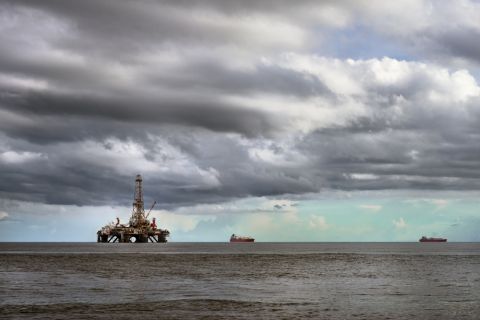
Statoil’s Sleipner Field is an example of geophysics helping the greater good through the injection and monitoring of CO2. (Source: Kjetil Alsvik, Statoil)
John Bradford recently relocated from Boise State University to take over the helm of the geophysics department at the Colorado School of Mines, arguably one of the best geophysics departments in the U.S. With the new responsibility came a new sense of purpose.
Granted, the world is not running out of oil or gas, and in spite of the shale plays, some of it still requires smart geophysicists to find the hidden nooks and crannies. But the world also is facing issues that might not have been apparent in the days of Clarence Karcher or Cecil Green. And this is what Bradford hopes to tackle in his new assignment.
Bradford gave a presentation at the recent Society of Exploration Geophysicists (SEG) annual meeting about his vision, and he said it was very similar to the presentation he was asked to give when he applied for the job at Mines. Apparently, it was a meeting of the minds.
So what do 21st century geophysicists look like? They need to be ready to solve some of society’s “grand challenges.” Largely, that means population growth. The world’s population is headed toward about 9 billion people by 2050, mostly in less-developed countries, Bradford said. A number of issues stem from this. How can geophysics help? Firstly, Bradford noted the correlation between the consumption of energy and the quality of life.
Secondly, there’s the issue of water. Much of Asia, in particular, is estimated to be living in river basins under severe water stress by 2050. And climate change is also a concern, with ExxonMobil going on the record as saying, “The risk is real, and appropriate steps should be taken to address that risk.” Geophysicists can help the world understand and monitor the earth’s response to climate change. Bradford noted examples like the Sleipner Field in Norway, where CO2 is being sequestered, and the ability to understand climate change through glacier hydrology such as the work being done in the Bench Glacier in Alaska. Through techniques like prestack depth migration and tomography of radar data as well as studies of fracture-induced seismic anisotropy, effects like water distribution and stress fields are better understood.
Finally, programs like the SEG’s Geoscientists Without Borders have been involved in several successful campaigns to help water-stressed areas tap into new sources of groundwater.
One of the surprises for Bradford was the renewed emphasis the department was placing on innovative computation. “My focus was on the application side and increasing diversity in the department,” he said. “But the department was also thinking about completely revising the curriculum with a focus on high-performance computing, machine learning and Big Data analytics.” This is the direction the industry is headed, he said, and Mines plans to be at the cutting edge.
Other technology trends will include robotics and distributed networks for data acquisition as well as space-borne remotely sensed data with terrestrial-based information, he said. And future work for geophysicists will include geology; hydrology; petroleum engineering; civil and environmental engineering; physics, chemistry and materials science; chemical and electrical engineering; and computer science and applied math.
“Even if you’re focused on oil and gas, your skillset is applicable to a lot of other areas,” he said.
Recommended Reading
Deadline in Trinidad and Tobago’s Bid Round Extended
2024-02-29 - Bids for the 13 shallow water blocks offshore Trinidad and Tobago are now due on May 27.
Iraq to Seek Bids for Oil, Gas Contracts April 27
2024-04-18 - Iraq will auction 30 new oil and gas projects in two licensing rounds distributed across the country.
TotalEnergies Starts Production at Akpo West Offshore Nigeria
2024-02-07 - Subsea tieback expected to add 14,000 bbl/d of condensate by mid-year, and up to 4 MMcm/d of gas by 2028.
E&P Highlights: Jan. 29, 2024
2024-01-29 - Here’s a roundup of the latest E&P headlines, including activity at the Ichthys Field offshore Australia and new contract awards.
Vår Energi Hits Oil with Ringhorne North
2024-04-17 - Vår Energi’s North Sea discovery de-risks drilling prospects in the area and could be tied back to Balder area infrastructure.




